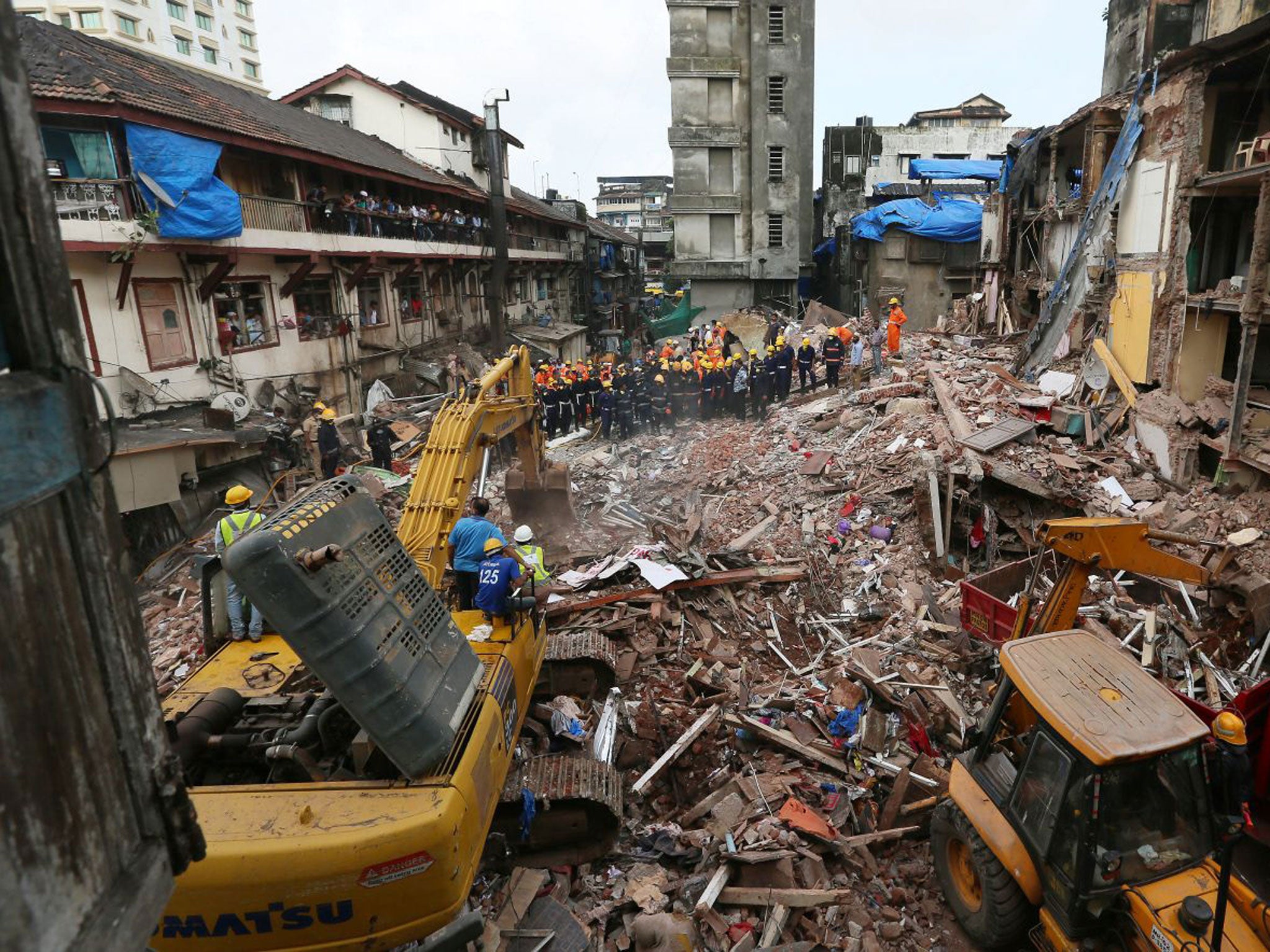Mumbai building collapse: Rescuers end search at disaster site that killed 33
Apartment block in financial district brought down by heavy seasonal rainfall

Your support helps us to tell the story
From reproductive rights to climate change to Big Tech, The Independent is on the ground when the story is developing. Whether it's investigating the financials of Elon Musk's pro-Trump PAC or producing our latest documentary, 'The A Word', which shines a light on the American women fighting for reproductive rights, we know how important it is to parse out the facts from the messaging.
At such a critical moment in US history, we need reporters on the ground. Your donation allows us to keep sending journalists to speak to both sides of the story.
The Independent is trusted by Americans across the entire political spectrum. And unlike many other quality news outlets, we choose not to lock Americans out of our reporting and analysis with paywalls. We believe quality journalism should be available to everyone, paid for by those who can afford it.
Your support makes all the difference.Rescuers have ended the search for survivors in the rubble of a collapsed apartment building in Mumbai, where 33 people were killed and 15 were pulled from the site.
Workers used heavy machinery to lift concrete slabs and cement blocks in the search for more survivors, but on Friday firefighter Bhaskar Pawar said everyone in the building had been accounted for.
Among those killed was a 20-day-old boy. Police were still trying to identify some of the victims, and said workers may have been present in ground-floor warehouses when the building fell. Three firefighters were among the 13 being treated for injuries at a Mumbai hospital.
The 117-year-old building was declared unsafe six years ago, but nine families were still living there. A nursery school had also continued to operate on the first floor, though it was not yet open for the day when the building collapsed on Thursday morning. The residents of an adjacent building were advised to leave after it developed cracks following the collapse.
Nearby resident Amina Sheikh, said: “This is my grandson. He used to go to school in that building,” she said, pointing at the rubble.
She had been getting the boy ready for school when she heard a loud boom and saw the building had crashed down. It was “an hour before his class began. That's why my grandson's life was saved”, she said.
It was the first major building collapse after Mumbai recorded 315-mm (12 inches) rainfall on Tuesday, the city's highest since 2005.
Thousands of buildings in Mumbai are more than a century old, their foundations weakened by years of heavy monsoon rains. The collapse of a four-story building in the city's suburb of Ghatkopar last month killed 17.
Building collapses are common in India during the monsoon season, which is June to September. High demand and lax regulations encourage some builders to use substandard materials or add unauthorised extra floors. Property prices and rents in Mumbai are among the highest in India as the city has expanded in the past five decades.
The city is slowly returning to normal after being paralysed by heavy downpours for two days. Train services and public transport were disrupted by flooding and water seeped into many low-lying buildings.
The city struggles to cope with the monsoon deluge each year, drawing criticism about its poor planning.
Since the start of the season, devastating floods across South Asia have killed at least 1,000 people and affected close to 40 million across northern India, southern Nepal and northern Bangladesh.
The rains have led to wide-scale flooding in a broad arc stretching across the Himalayan foothills in the three countries, causing landslides, damaging roads and electric towers and washing away tens of thousands of homes and vast swathes of farmland.
Associated Press
Join our commenting forum
Join thought-provoking conversations, follow other Independent readers and see their replies
Comments